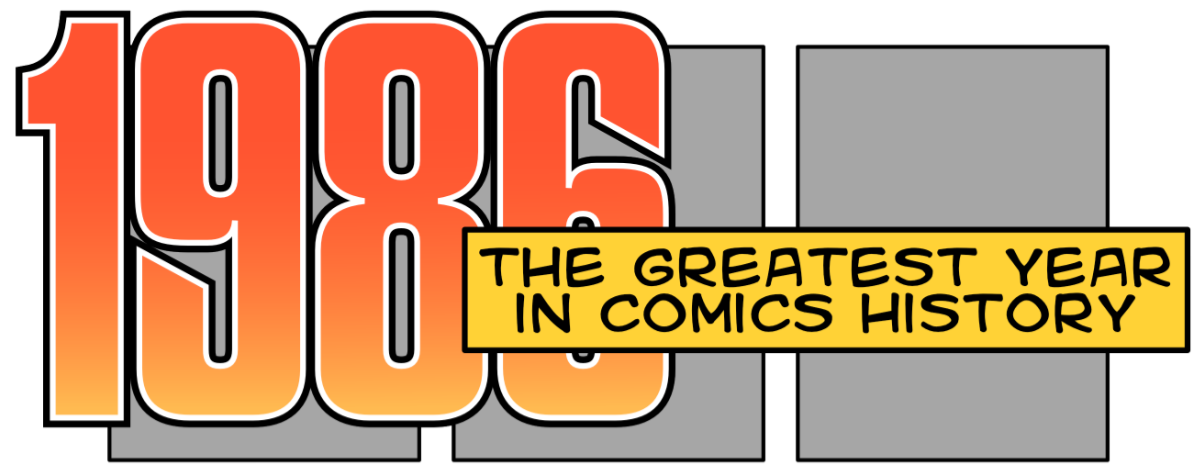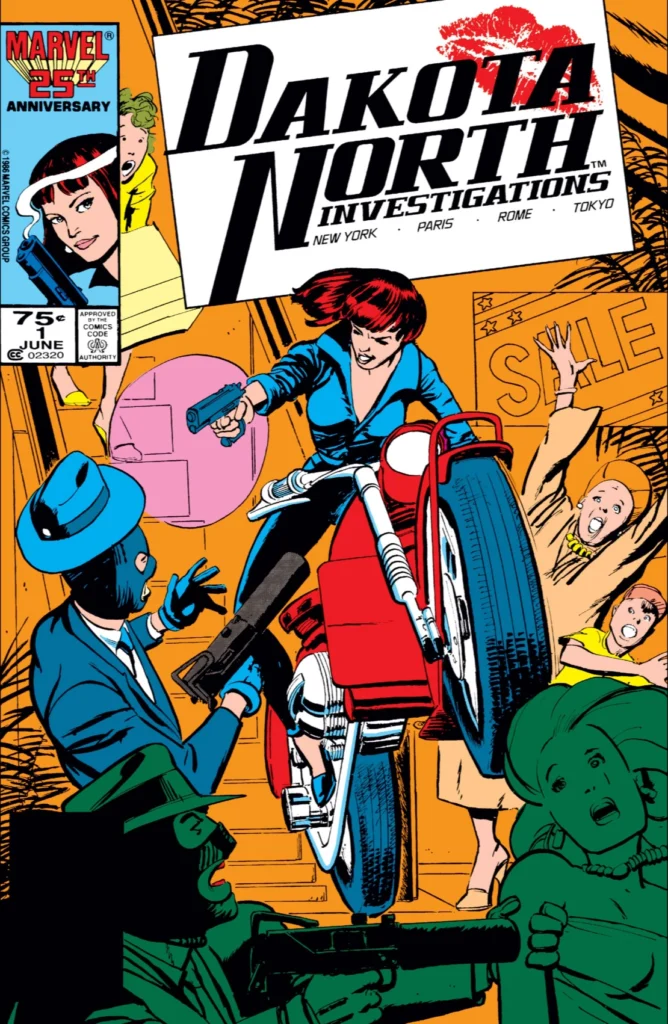
“If you like Miami Vice, you’ll like Dakota North.”
– Marvel editor Larry Hama, speaking in Marvel Age #40, cover date July 1986
Miami Vice was in the middle of its second season in February of 1986. The stylish TV series had been warmly received by critics and extremely popular with viewers, but by the second season it was coming under critical fire for leaning too hard into the style at the expense of coherent storytelling. Series producer Michael Mann had gone on record saying that the series’ popularity would no doubt spawn a slew of imitations (as reported in Rolling Stone #470, March 1986 – the same one with the Frank Miller interview), but he was probably thinking about other TV shows rather than comic books.
Nevertheless, Miami Vice’s mix of MTV style and cinematic action was undoubtedly a major (if not the major) influence on Dakota North, a short-lived but long and fondly remembered contemporary detective series published by Marvel between February and October, 1986. In a promotional text piece in issue 40 of Marvel’s coming attractions news magazine, Marvel Age, creator and editor Larry Hama explains that the series started out as a romance comic book about fashion models. It’s not as weird an idea as it sounds – romance comics were very popular in the 1950s. Marvel (and its predecessor Atlas) had published several, including Millie the Model, which ran for an impressive 207 issues between 1945 and 1973.
But Hama decided better of it, reasoning that an action heroine would have a better chance of success in the 1980s comic book market. Martha Thomases was brought on to flesh out the cast of characters and write the series. According to a 2017 interview on Bird, Thomases had worked as a publicist for DC and had been a life-long comic book fan. But it was her experience writing the style column in the Village Voice that prompted Hama to invite her to write Dakota North (as reported in Marvel Age #40).
A cast of characters
Keeping the television comparison going, the first issue of Dakota North definitely reads like an ‘80s TV show pilot. We are introduced to half of the regular cast in the first two pages: Dakota, a sarcastic, gun-toting detective; her goofy assistant Mad Dog, and Amos Culhane, an oddly timid police detective who clearly has a crush on Dakota.
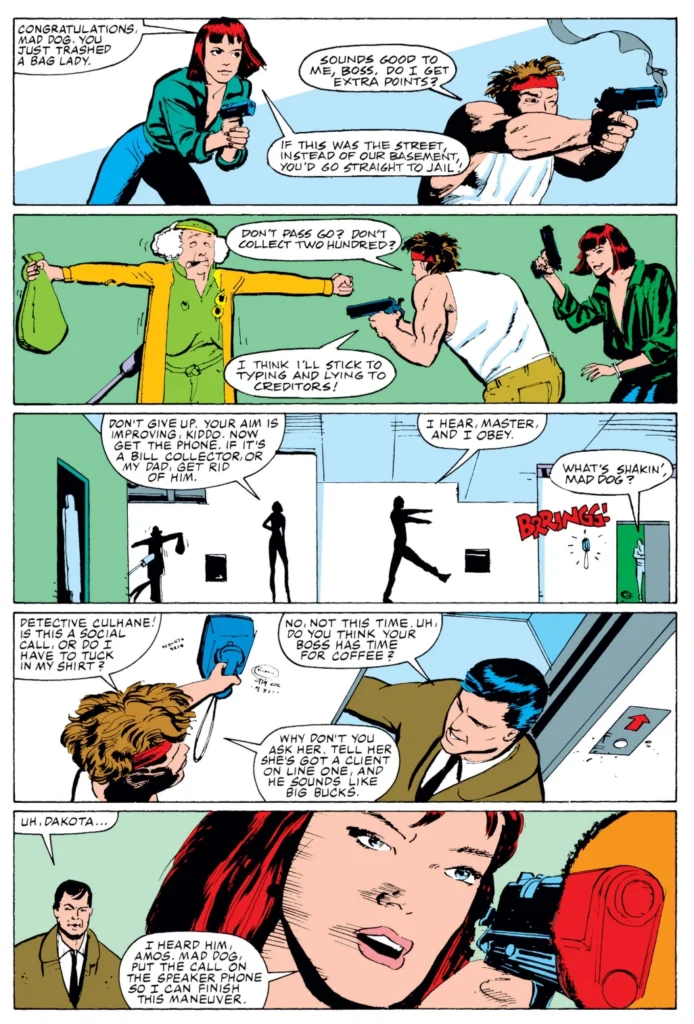
By page three the formula for the series is pretty well spelled out as Dakota is hired by a fashion designer to protect him from a series of escalating threats. An interesting point is that, while the series logo is done up to look like a business card that says “Dakota North Investigations,” the character is actually portrayed as more of a bodyguard, even answering the phone as “North Security.” The series seems to be setting itself up to emphasize action and intrigue rather than traditional detective stories.
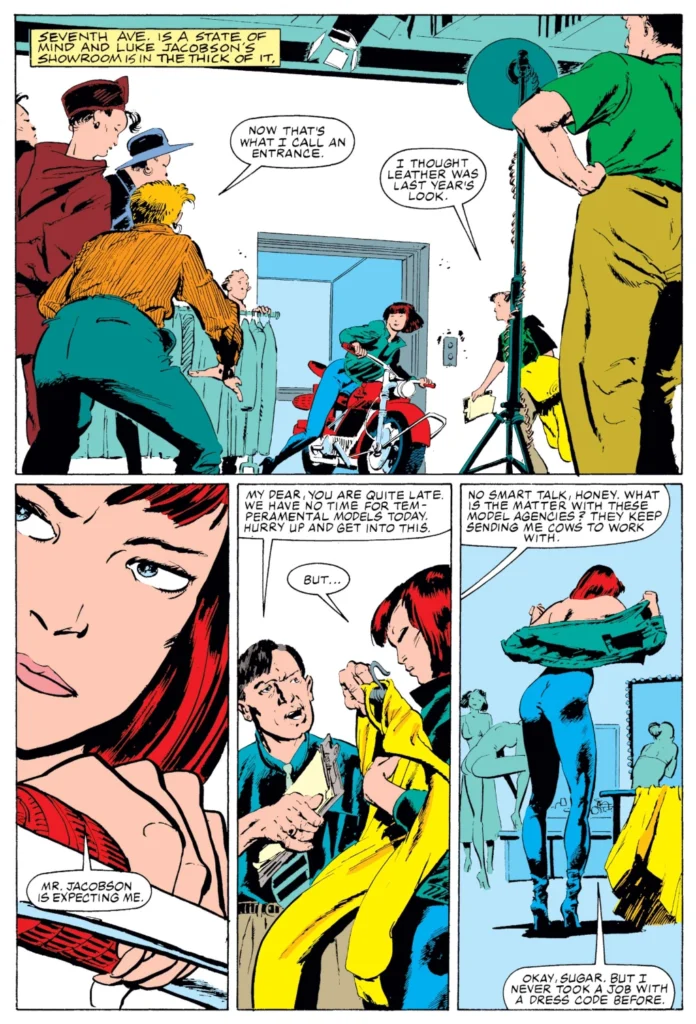
After an amusing (if a bit obvious) bit where Dakota is mistaken for a fashion model and ordered to change clothes, we meet our next two cast members: Dakota’s irascible father S. J. North and her twelve-year-old brother Ricky. Ricky is being sent to live with Dakota while their father attends to some possibly nefarious business, and is clearly meant to cause trouble. He also serves as a sort of sarcastic Greek chorus, commenting on the action and giving us an audience viewpoint character for Dakota to explain things to.
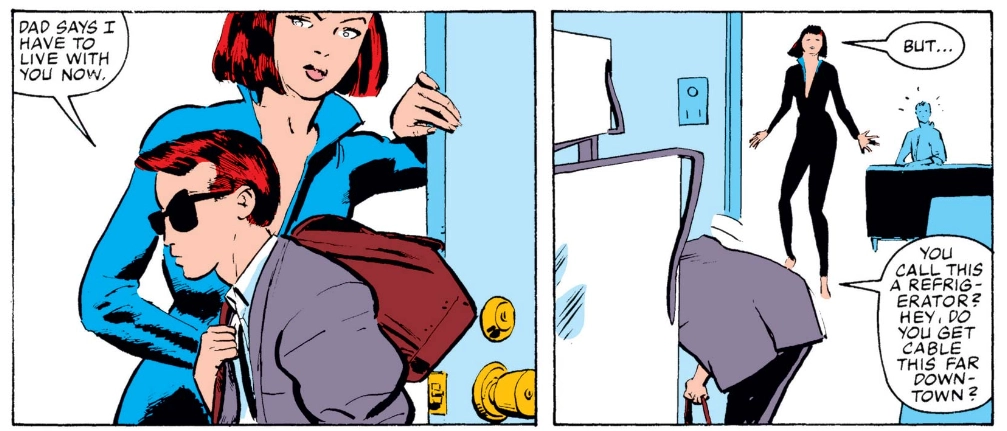
Soon after, we are introduced to our final regular cast member: Cleo Vanderlip, a ruthless CEO-type and clearly the recurring villain of the series. In one page she conveniently explains the plot of threats against Dakota’s client as a maneuver to take over a fashion conglomerate – again reinforcing the idea that this story is not a mystery, but an action piece. Cleo cements her “main villain” status by explaining that she has a personal grudge against Dakota’s father. It all seems a little rushed, as if Hama and Thomases feel the need to explain the entire series setup as quickly as they can.
The first issue wraps the story up with a pair of action set pieces. The first is an admittedly spectacular motorcycle chase that has Dakota crashing through windows and riding up escalators as her client is kidnapped by masked thugs. This more-or-less leads into a final shootout with the bad guys in a very Miami Vice ending: the colorful hired thug ends up in the river, while the villainous mastermind gets away scot-free. You can almost hear the synth music in the background.
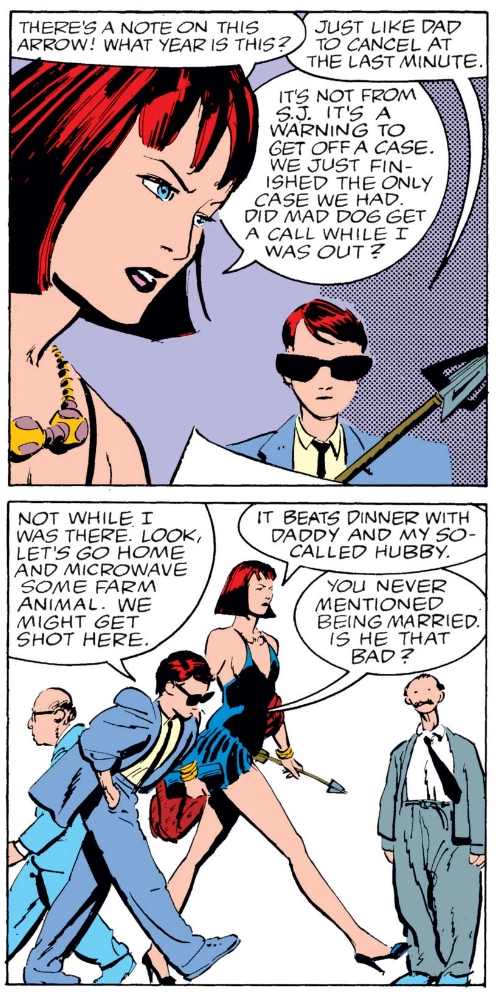
Too ambitious for its own good
Issue 2 launches a four-part story, possibly a mistake which may well have led to the series’ premature end. In the 1980s, trade paperback collections were far from the inevitability they are these days. Single issues were the primary, and usually only, way in which the audience engaged with the material. As a new and somewhat experimental title, Dakota North was published on a bi-monthly basis, meaning that it would be two months between issues, and more than likely the previous issue would be long gone from store shelves by the time the next one came along. Each new chapter does a fair job of getting the reader up to speed, but a four part story spread out over eight months would be enough to test any reader’s patience.
The story itself is a lot of fun. Dakota meets her next client, forced on her by her father. Once again she is a bodyguard rather than a detective, in this case hired to protect a retired CIA agent on a book tour. The real plot, however, is a fairly standard macguffin, a gold plated pen containing a sample of experimental nerve gas that Dakota’s client has tricked Ricky into taking possession of.
While Russian agents chase Dakota and her client, the villainous Cleo sees an opportunity to grab the pen for herself, although it’s unclear how she knows what it is or that Ricky has it. She sends one of her models out in a convoluted plan to seduce Ricky and get him to fly to Paris.
Over the next three issues we are treated to a very James Bond-style plot involving a chase across Europe, numerous captures, escapes, and recaptures, and an overly colorful villain with an unlikely pet. The clichés are so over the top that you can’t help but chuckle, and the story is helped along by witty dialogue and some great action set-pieces.
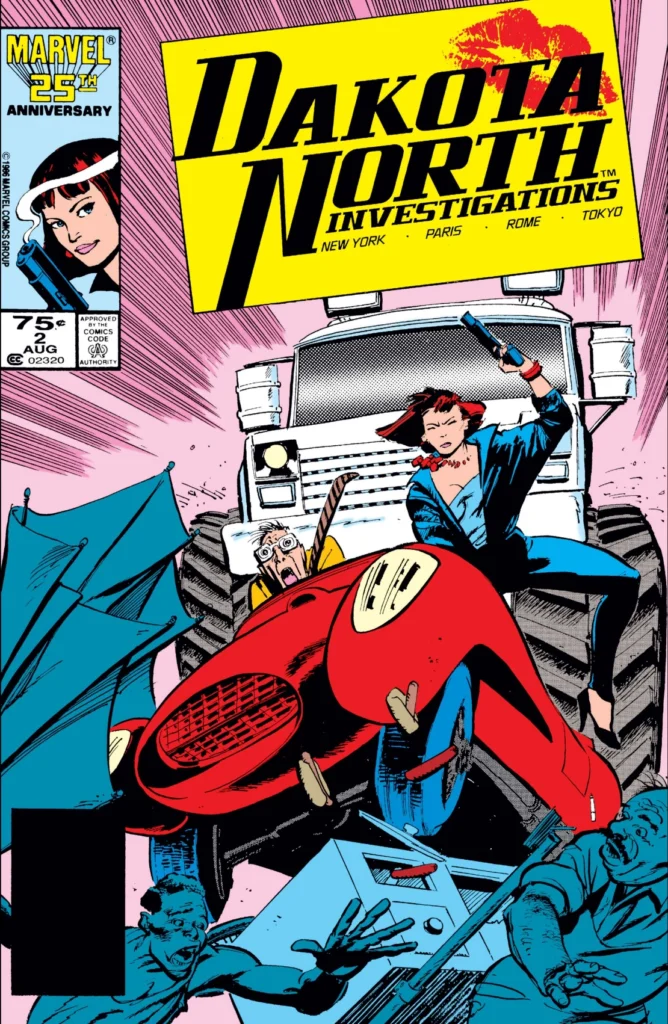
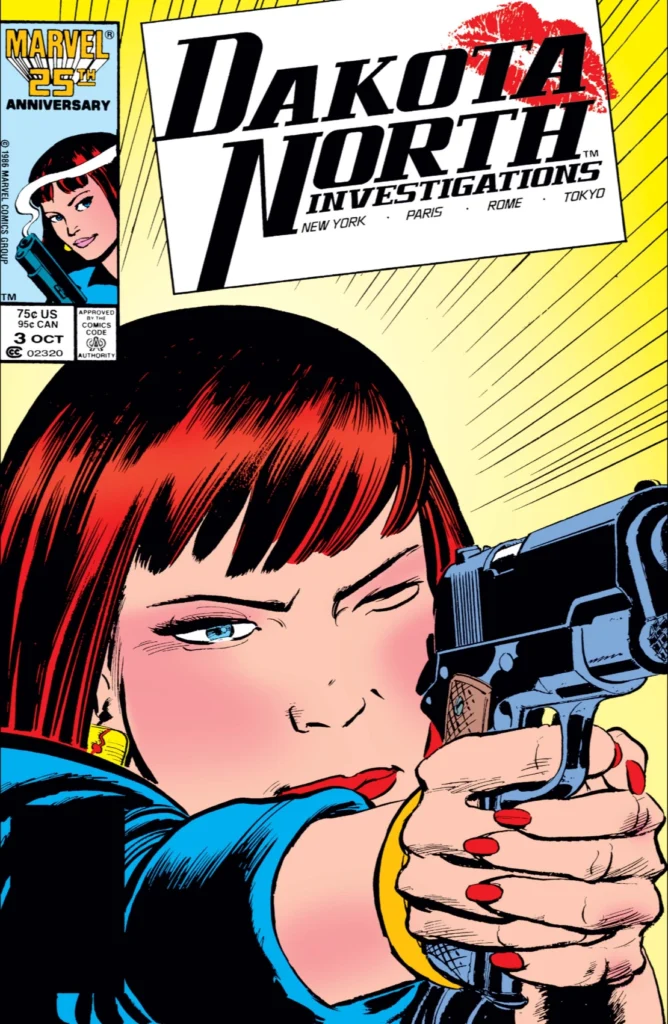
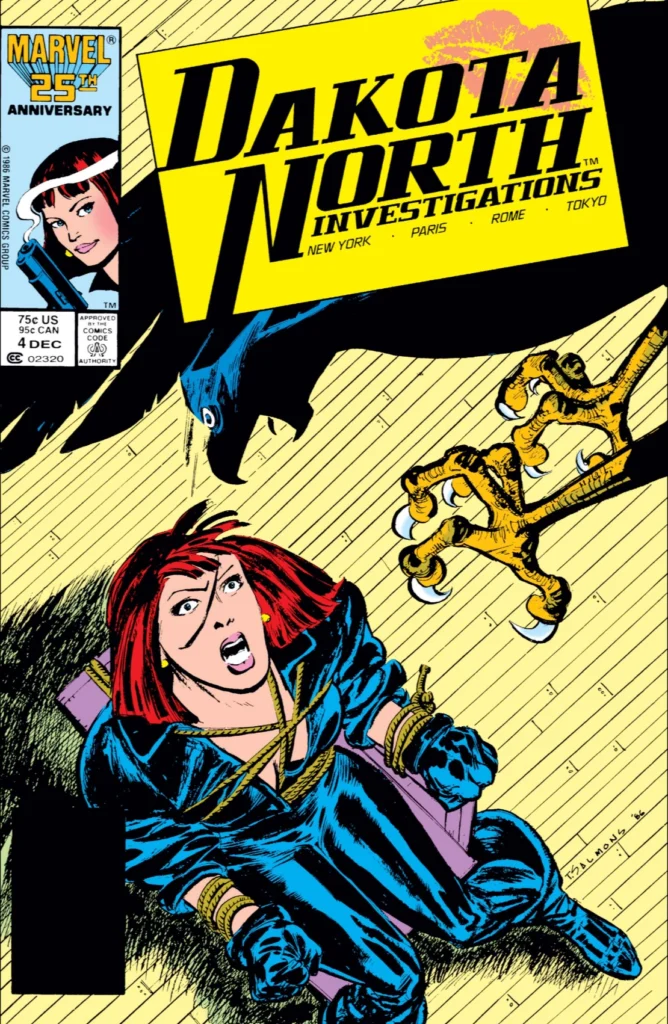
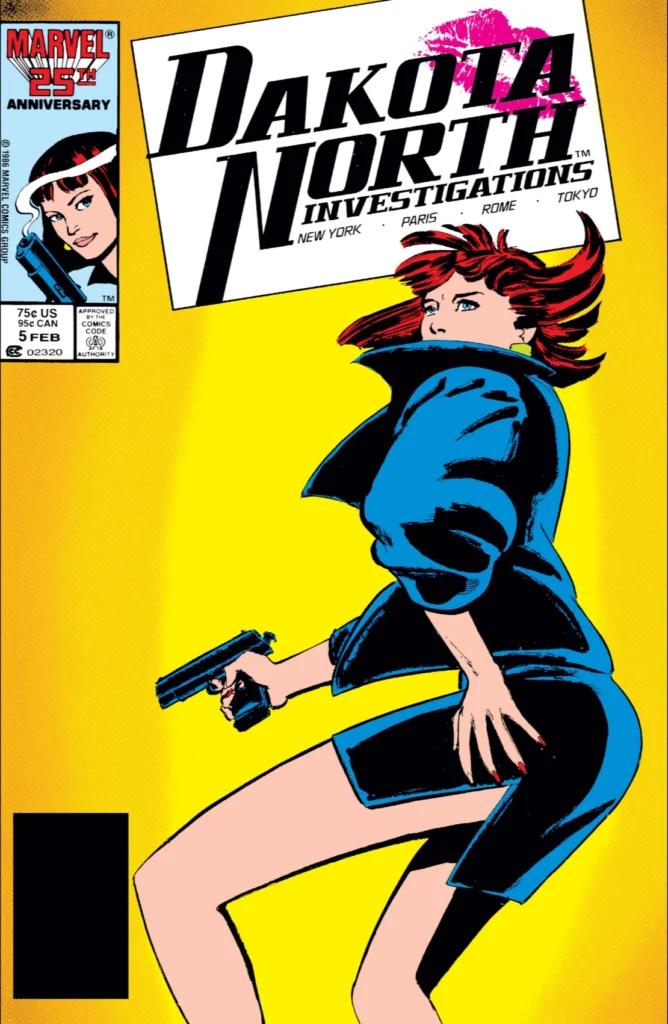
Dakota North issues 2 through 5, cover art by Tony Salmons. © Marvel.
So what happened?
The title appears to have been canceled at short notice and with very little fanfare. There’s no mention in the letters column of #5 that it’s the last issue, only a somewhat peevish caption at the end of the story that reads “this is where we usually put the blurb for the next issue, if there was a next issue, but there isn’t.”
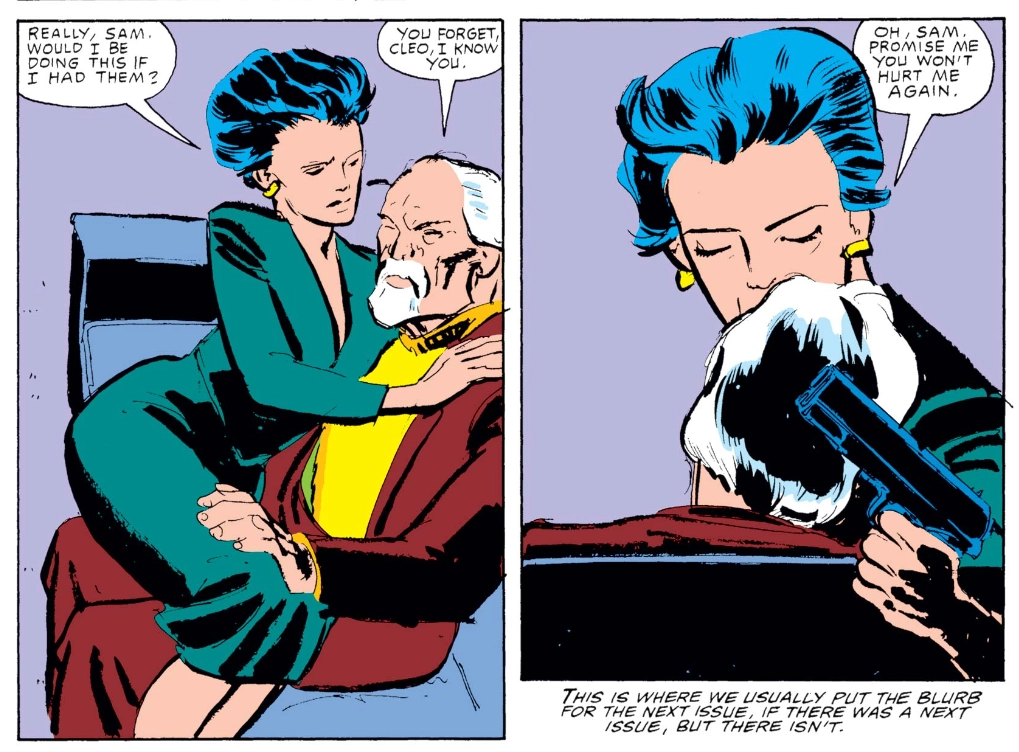
Dakota North was very different from anything else Marvel was doing at the time. It seems like it would have been a much better fit for Marvel’s Epic line, which was generally aimed at an older audience, but it was published as a regular Marvel title, going out to newsstands and grocery stores along with Spider-Man and G.I. Joe.
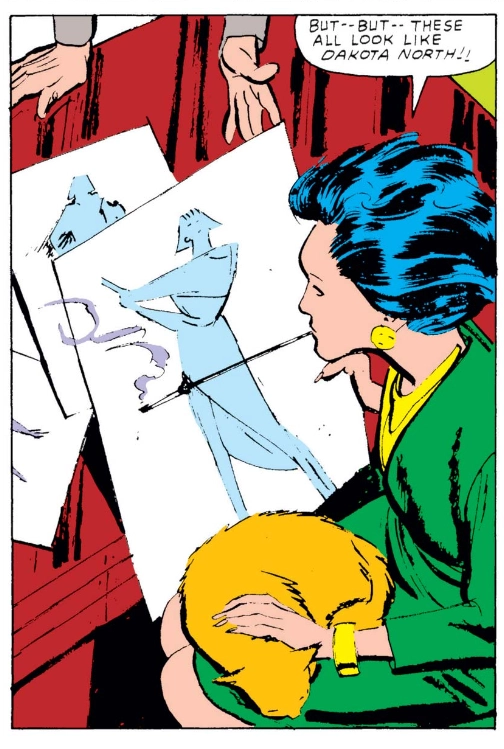
The unusual and somewhat inconsistent artwork by Tony Salmons may not have done the series any favors. He seems to be going for something of a fashion illustration look, which makes perfect sense, and when he’s on top of it the book looks great. The problem is that for whatever reason his work is often underdrawn, appearing sketchy and indistinct. Matters aren’t helped by the rough printing and flat color that were standard for Marvel’s newsstand books at the time.
It’s possible that Marvel just couldn’t figure out how to market Dakota North to their readership. There was a stylish house ad that appeared in all the Marvel books on the months that new issues of Dakota North came out, but other than that it received very little promotion. A three page promotional article in Marvel Age #40 that ran concurrently with Dakota North #2 seems like too little, too late. A one-page illustration depicting Dakota as a paper doll with different outfits appeared in Marvel Age Annual #2 in June of 1986, the same month as Dakota North #3; the fashion tie-in is clever, but it’s unlikely to have interested readers of Marvel’s predominantly superhero titles, especially as the book appeared to have no ties to the wider Marvel universe. Or did it?
Dakota North lives on
Apart from appearing in a crowd scene on the cover of Marvel Age Annual #2, there is no indication that Dakota North was meant to take place in the Marvel universe. No mention of it is made in any of the sparse promotional material for the book, and the only Marvel reference in the book itself is in #3, in the form of an Incredible Hulk cartoon appearing on a TV screen. However, the character was created in-house by a Larry Hama, a Marvel staff editor, and Martha Thomases’ scripts would most likely have been written under Marvel’s usual work for hire contract, which meant that Marvel owned the character and could do what they wanted with it.
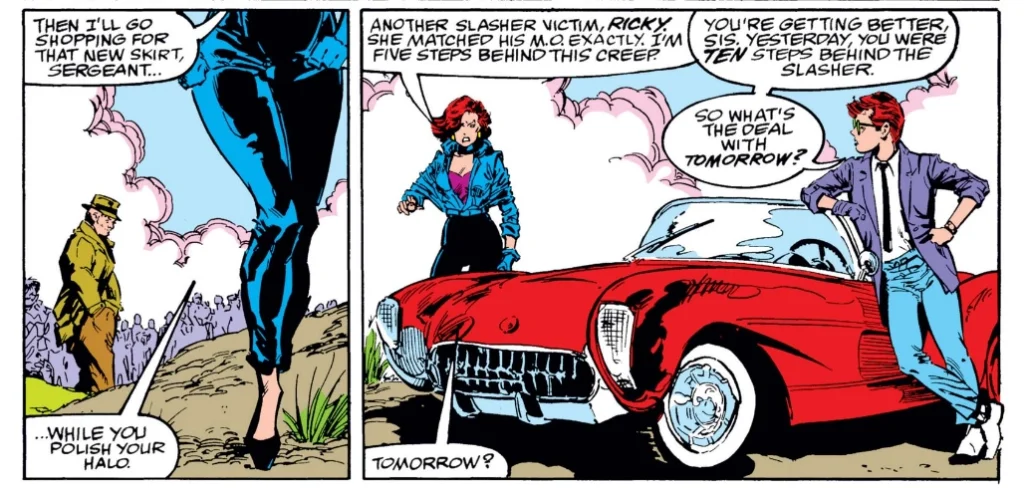
Dakota North enters the Marvel universe as if she’s always been there in Web of Spider-Man #37 (cover date April 1987), written by Jim Owsley (aka Christopher Priest) with artwork by Steve Geiger and Keith Williams. The story about Peter Parker’s fashion model girlfriend Mary Jane being threatened by a stalker makes perfect sense for Dakota’s inclusion. Dakota’s troublesome brother Ricky also makes an appearance, and the art style is somewhat similar to what we saw in Dakota North.
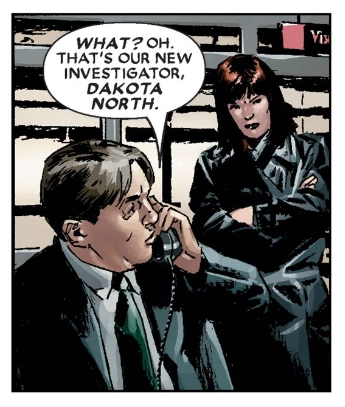
Dakota makes sporadic appearances in various Marvel titles over the next 30 years, taking on the Punisher in Power Pack #46 (May 1989), teaming up with the Wasp in Marvel Super-Heroes #3 (July 1990) and joining the supporting cast for all 20 issues of Cage (1990-1991). A gig as a bodyguard in a three issue story arc in Black Panther volume 3 issues 31-33 (2001), again written by Christopher Priest is followed by a long residency in Daredevil, starting in volume 2, #82 with Ed Brubaker’s run on the series in 2006 and continuing when Andy Diggle takes over the title in 2009. She most recently appeared in a few issues of Captain Marvel (issues 11, 13 and 14, and a crossover story in Avengers Assemble #17) in 2014, followed by minor appearances in Mark Waid’s Daredevil (#30) and Kurt Busiek’s The Marvels (#5). She even appears in two versions of the Marvel role playing game.
Clearly many of Marvel’s star writers have some affection for the character, who seems like a shoo-in for further appearances in the comics and possibly even in the Marvel Cinematic Universe. I would love to see Dakota North get her own comic book series again, but maybe as a period piece set in the 1980s…
Where can you read it?
All five issues of Dakota North are available to read on Marvel Unlimited, Marvel’s digital subscription service, as are most of her later appearances. In 2018 Marvel published Dakota North: Design for Dying, a trade paperback that reprints all five issues of the main series as well as the Web of Spider-Man, Power Pack, and Marvel Super-Heroes issues and some of the Daredevil appearances.
